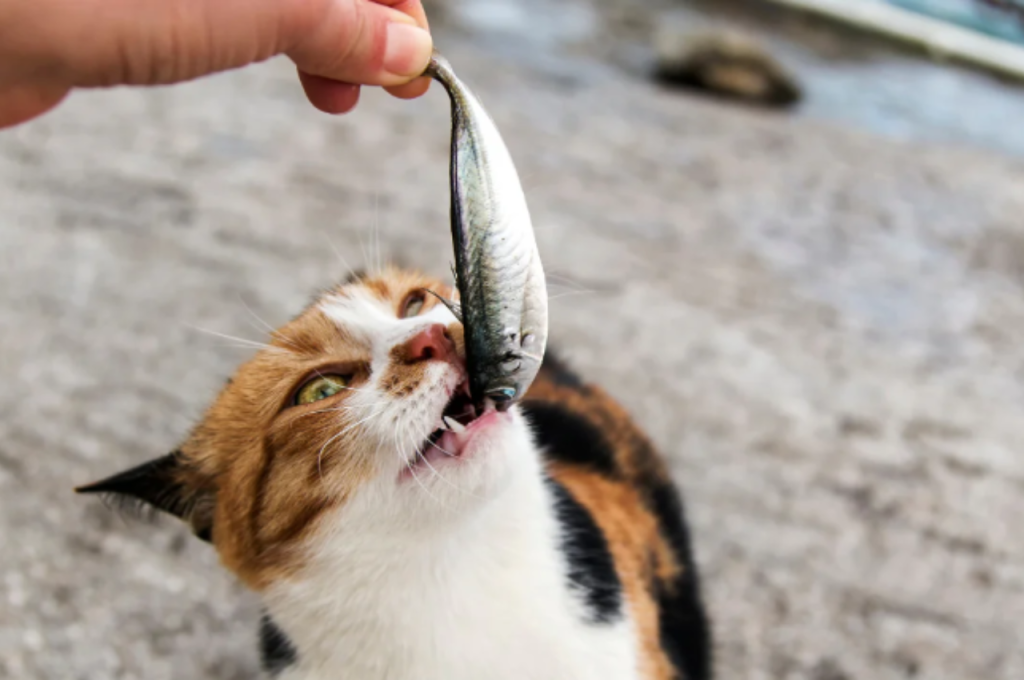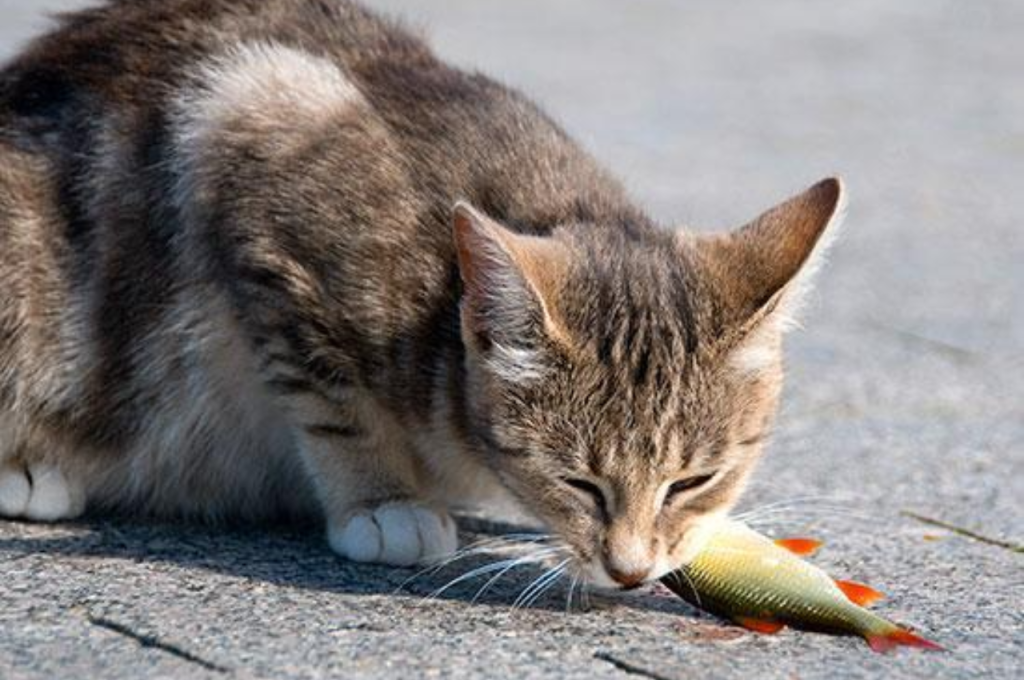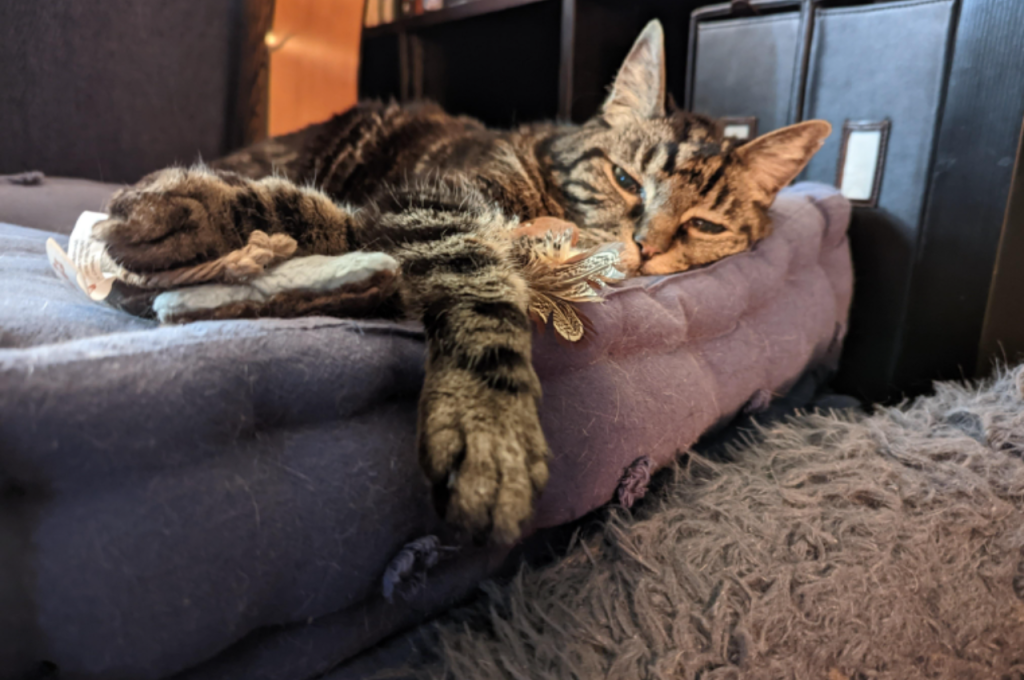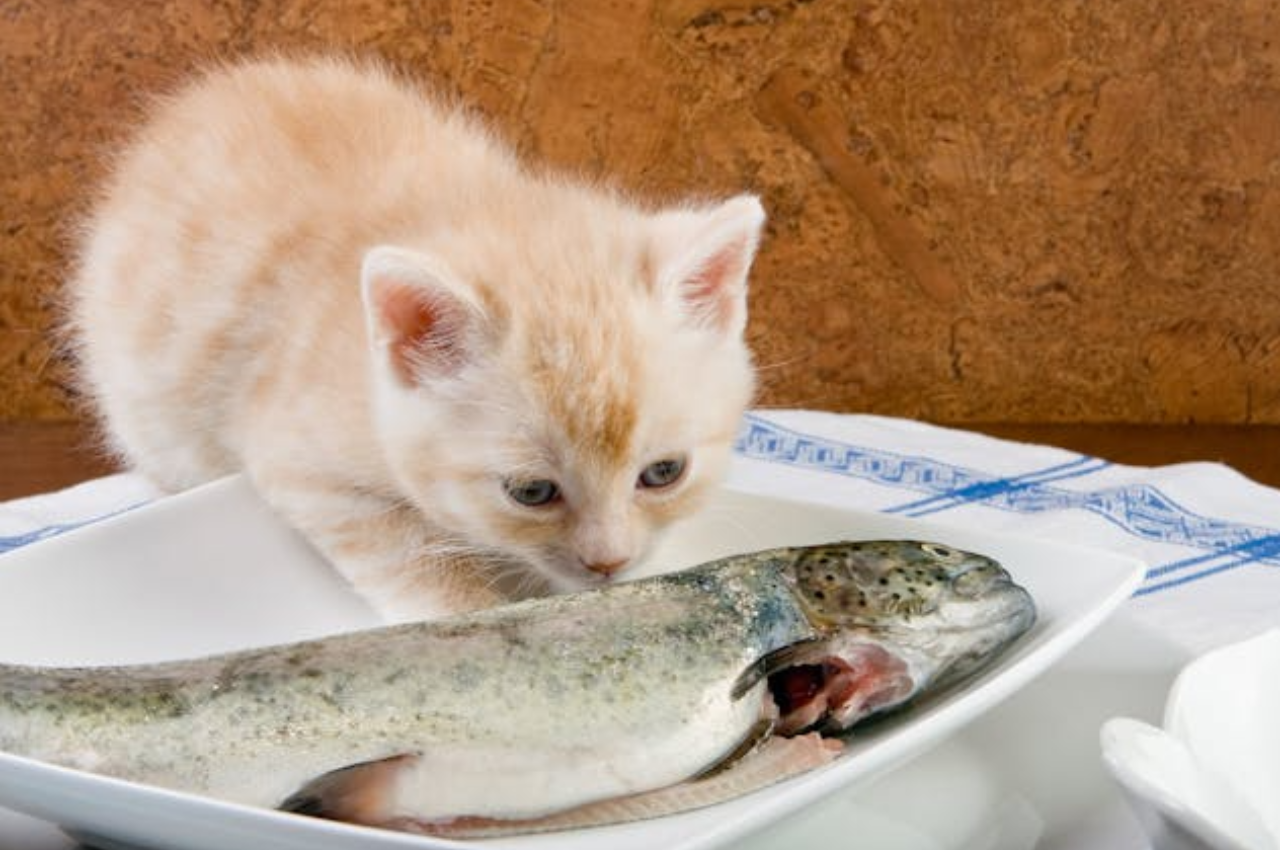Feeding your cat salmon every day is not recommended due to potential risks of nutritional imbalance. While salmon is a healthy choice for cats in moderation, daily consumption may lead to health issues.
Salmon may lack certain essential nutrients for your cat’s overall well-being. It’s important to provide a balanced diet to your feline friend to ensure their health and longevity. We will explore the benefits and risks of feeding your cat salmon regularly, as well as alternative options to consider for a well-rounded feline diet.
Nutritional Benefits of Salmon for Cats
Cats can benefit greatly from the nutritional value of salmon as a part of their diet. Salmon is a nutrient-dense food that offers various health advantages to our feline friends.

Rich Source of Omega-3 Fatty Acids
Salmon is an excellent source of Omega-3 fatty acids, essential for a cat’s overall well-being, such as supporting heart health and reducing inflammation.
High-quality Protein Content
Salmon boasts high-quality protein that aids in muscle development, tissue repair, and the production of essential enzymes for cats.
Potential Risks of Feeding Salmon Daily
Feeding salmon to your cat daily can present several potential risks that pet owners should be aware of. While salmon is rich in omega-3 fatty acids and protein, it also contains high levels of mercury and other contaminants that can be harmful to cats if consumed in large quantities.
Mercury and Toxins Accumulation
Salmon may contain high levels of mercury and toxins.
- Mercury toxic to cats
- Toxins may cause health issues
Insufficient Nutrient Profile
Salmon may not provide all the essential nutrients a cat needs daily.
- Lacks necessary nutrients for cats.
- This may lead to deficiencies over time.
Guidelines for Incorporating Salmon in Cat’s Diet
Salmon can be a nutritious addition to your cat’s diet when incorporated responsibly. Here are some essential guidelines to consider when feeding your cat salmon.
Consulting with A Veterinarian
Before making any significant changes to your cat’s diet, it’s crucial to consult with a veterinarian. They can provide personalized advice based on your cat’s specific health needs and dietary requirements.
Moderation and Variety in Food Choices
When introducing salmon into your cat’s diet, moderation is key. Moderation in feeding salmon helps to prevent any potential digestive upsets or nutritional imbalances. Additionally, it’s important to ensure a variety of food choices to ensure a balanced diet for your feline friend.
Alternatives to the Daily Salmon Diet
While salmon is a nutritious and delicious treat for your cat, feeding it to them every day may not be the best option. Variety is key to ensuring your cat receives a well-balanced diet that meets all their nutritional needs. Here are a few alternatives to consider:
Rotational Feeding Plan
Implementing a rotational feeding plan ensures that your cat gets different protein sources to promote a healthy and diverse diet. Rotate between different types of fish, such as tuna, mackerel, or sardines, to provide a range of essential nutrients. Additionally, include poultry options like chicken or turkey, and even small amounts of lean beef or lamb.

Supplementing with Omega-3
Omega-3 fatty acids play a crucial role in supporting your cat’s overall health, including their skin and coat. If you are concerned about reducing the amount of salmon in your cat’s diet, you can supplement their meals with omega-3 supplements specifically formulated for cats. These supplements often contain fish oil derived from other fish species, such as anchovies or krill.
Alternatively, you can incorporate alternative sources of omega-3 into your cat’s diet. Flaxseed and chia seeds are plant-based options that provide a good amount of omega-3 fatty acids, although cats may not efficiently convert these to the active form as fish-based sources.
Remember, it’s always important to consult with your veterinarian before making any significant changes to your cat’s diet. They can provide guidance tailored to your cat’s specific needs, ensuring they remain happy and healthy.
Observing Cat’s Response to Salmon Diet
When considering feeding your cat salmon daily, observe their response to ensure it suits their dietary needs and health. While salmon can be a healthy addition, moderation and balance are key to maintaining a well-rounded feline diet. Monitoring their reaction is crucial for long-term well-being.
Monitoring Health Indicators
One of the essential aspects of feeding your cat salmon every day is closely monitoring their health indicators. Regularly observing your cat’s overall well-being will help you determine whether a salmon diet is suitable for them. Keep an eye on the following indicators:
- Coat Health: A salmon-rich diet should contribute to a glossy and lustrous coat. Look for signs of improved fur texture and reduced shedding.
- Skin Condition: A healthy diet can help alleviate skin issues, such as dryness, itchiness, or redness. Assess your cat’s skin for any positive changes.
- Weight Management: As cats can be prone to weight gain, it is crucial to monitor their weight when introducing a salmon diet. If you notice any significant weight fluctuations, consider adjusting portion sizes appropriately.
- Litter box Habits: Observe any changes in your cat’s litter box habits, including urine and feces consistency. A balanced salmon diet should promote regularity and firm stools.
- Energy Levels: Pay attention to your cat’s energy levels and overall vitality. Increased activity and playfulness can indicate that the salmon diet is satisfying their nutritional needs.
Adapting the Feeding Routine
When incorporating salmon into your cat’s daily diet, it is important to gradually introduce it and adapt their feeding routine accordingly. Follow these steps for a smooth transition:
- Start Slow: Begin by mixing a small amount of salmon with their regular cat food. Slowly increase the ratio of salmon over several days.
- Portion Control: Adjust the portions to ensure your cat is receiving the appropriate amount of nutrients for their size and age. Consult your veterinarian to determine the optimal serving size.
- Water Intake: Keep an eye on your cat’s water consumption. Feeding salmon every day might result in a decreased thirst drive, so ensure they have access to fresh water at all times.
- Variety is Key: While salmon can be a healthy addition to your cat’s diet, don’t rely solely on this one protein source. Incorporate other high-quality proteins to provide a balanced and diverse nutritional profile.
By carefully observing your cat’s response to a salmon diet, monitoring their health indicators, and adapting their feeding routine accordingly, you can ensure they receive the optimal nutrition and enjoy the benefits of a salmon-rich diet.
Addressing Common Concerns About Salmon Diet
While salmon can be a nutritious addition to a cat’s diet due to its high omega-3 fatty acid content, there are some common concerns to consider. These include the potential presence of mercury and other contaminants in salmon, which can be harmful to cats if consumed in excess.
Allergies and Sensitivities
Some cats may have allergies or sensitivities to salmon protein, leading to digestive issues. Pet owners need to monitor their cat’s response to salmon consumption closely and consult with a veterinarian if any symptoms of allergies or sensitivities arise.
Effect on Skin and Coat Health
Salmon is rich in omega-3 fatty acids, contributing to healthy skin and shiny coat in cats when fed in moderation.

Conclusion
While salmon is a healthy treat for your cat, feeding it daily may lead to health issues. Variety in your cat’s diet is crucial for overall well-being. It’s best to consult your vet and provide a balanced diet to ensure your feline friend’s happiness and health.
